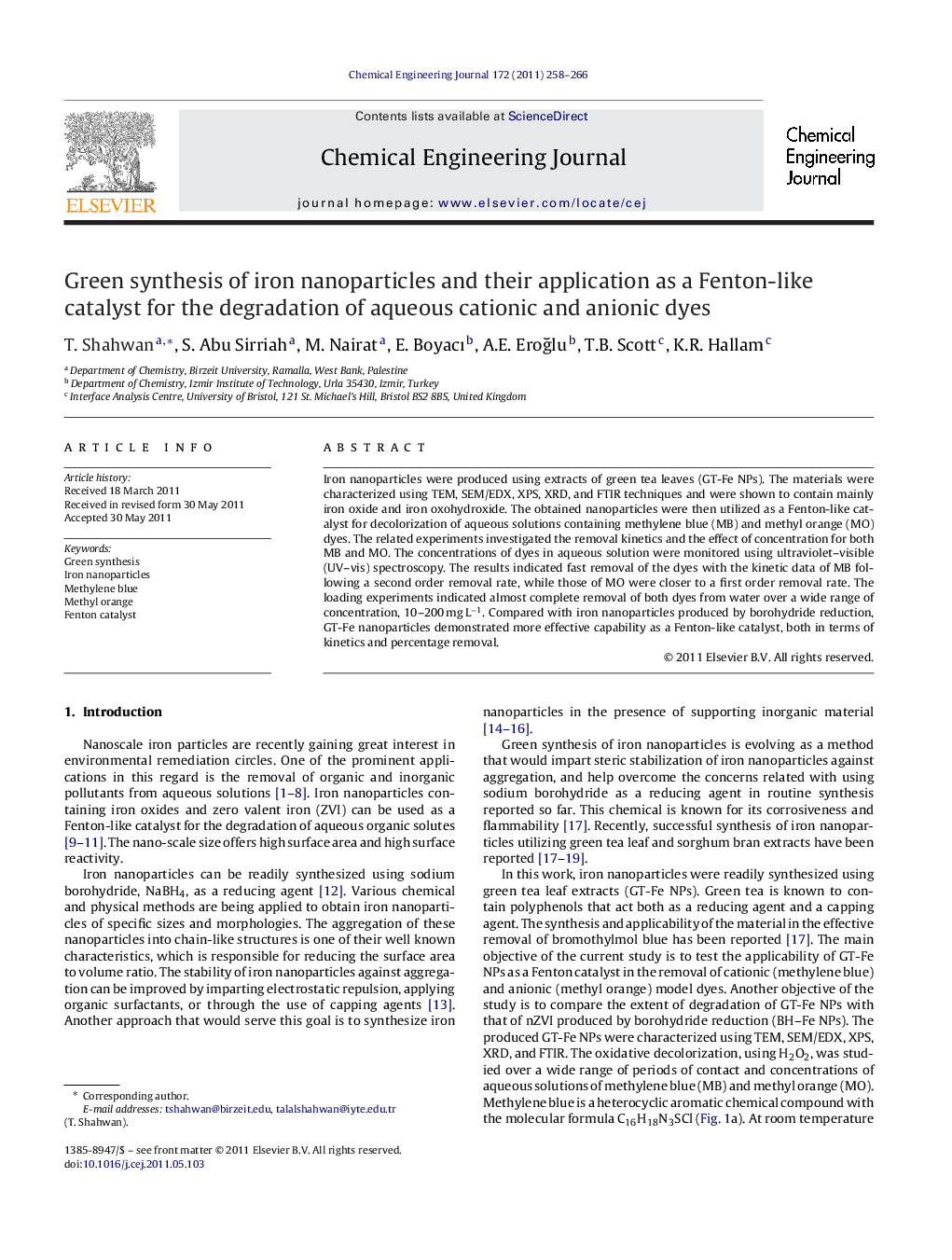| Article ID | Journal | Published Year | Pages | File Type |
|---|---|---|---|---|
| 151050 | Chemical Engineering Journal | 2011 | 9 Pages |
Iron nanoparticles were produced using extracts of green tea leaves (GT-Fe NPs). The materials were characterized using TEM, SEM/EDX, XPS, XRD, and FTIR techniques and were shown to contain mainly iron oxide and iron oxohydroxide. The obtained nanoparticles were then utilized as a Fenton-like catalyst for decolorization of aqueous solutions containing methylene blue (MB) and methyl orange (MO) dyes. The related experiments investigated the removal kinetics and the effect of concentration for both MB and MO. The concentrations of dyes in aqueous solution were monitored using ultraviolet–visible (UV–vis) spectroscopy. The results indicated fast removal of the dyes with the kinetic data of MB following a second order removal rate, while those of MO were closer to a first order removal rate. The loading experiments indicated almost complete removal of both dyes from water over a wide range of concentration, 10–200 mg L−1. Compared with iron nanoparticles produced by borohydride reduction, GT-Fe nanoparticles demonstrated more effective capability as a Fenton-like catalyst, both in terms of kinetics and percentage removal.
► Fe NPs rich in iron oxide and oxohydroxide were produced using green tea extracts. ► They were effective as a Fenton-like catalyst in the removal of MB and MO dyes. ► Green Fe NPs were a better catalyst than Fe NPs produced by borohydride reduction.
